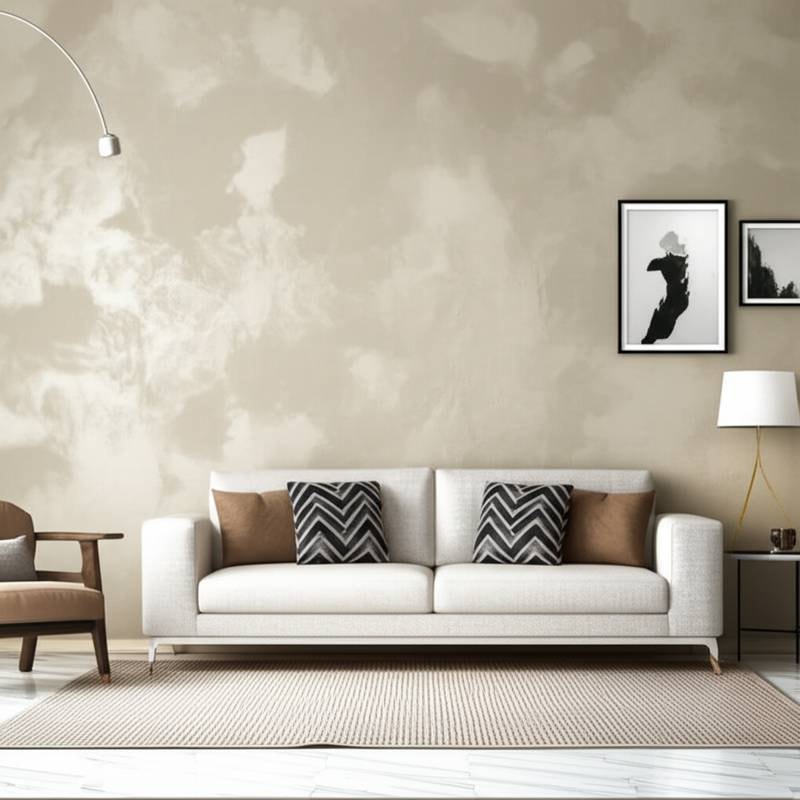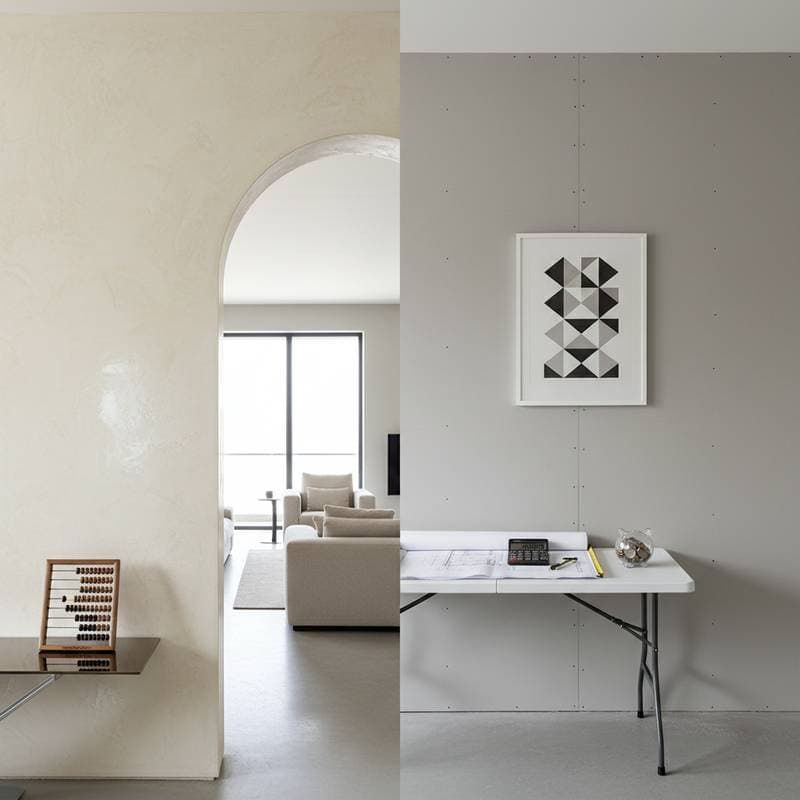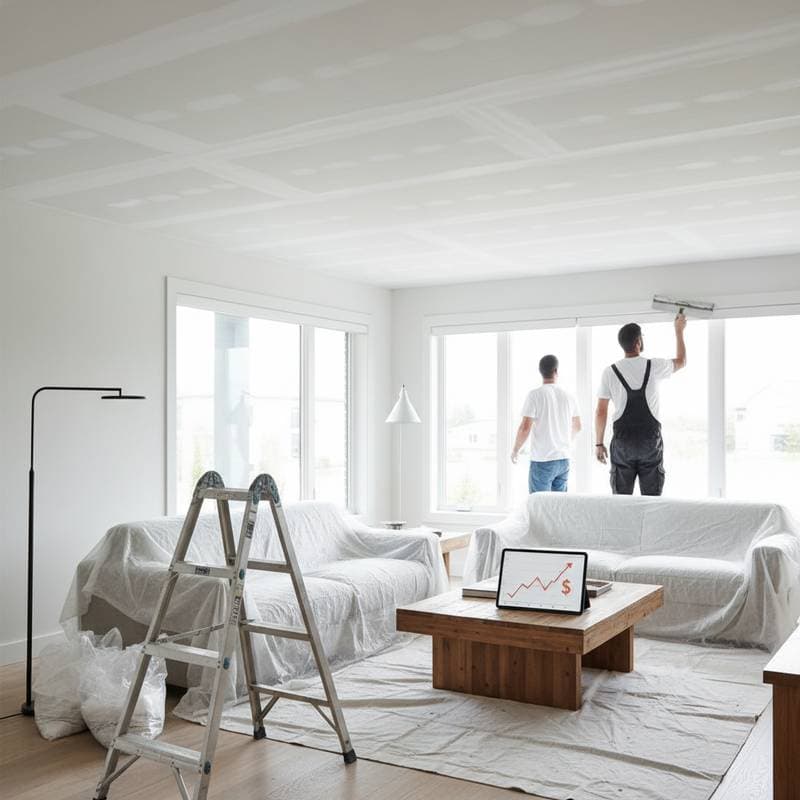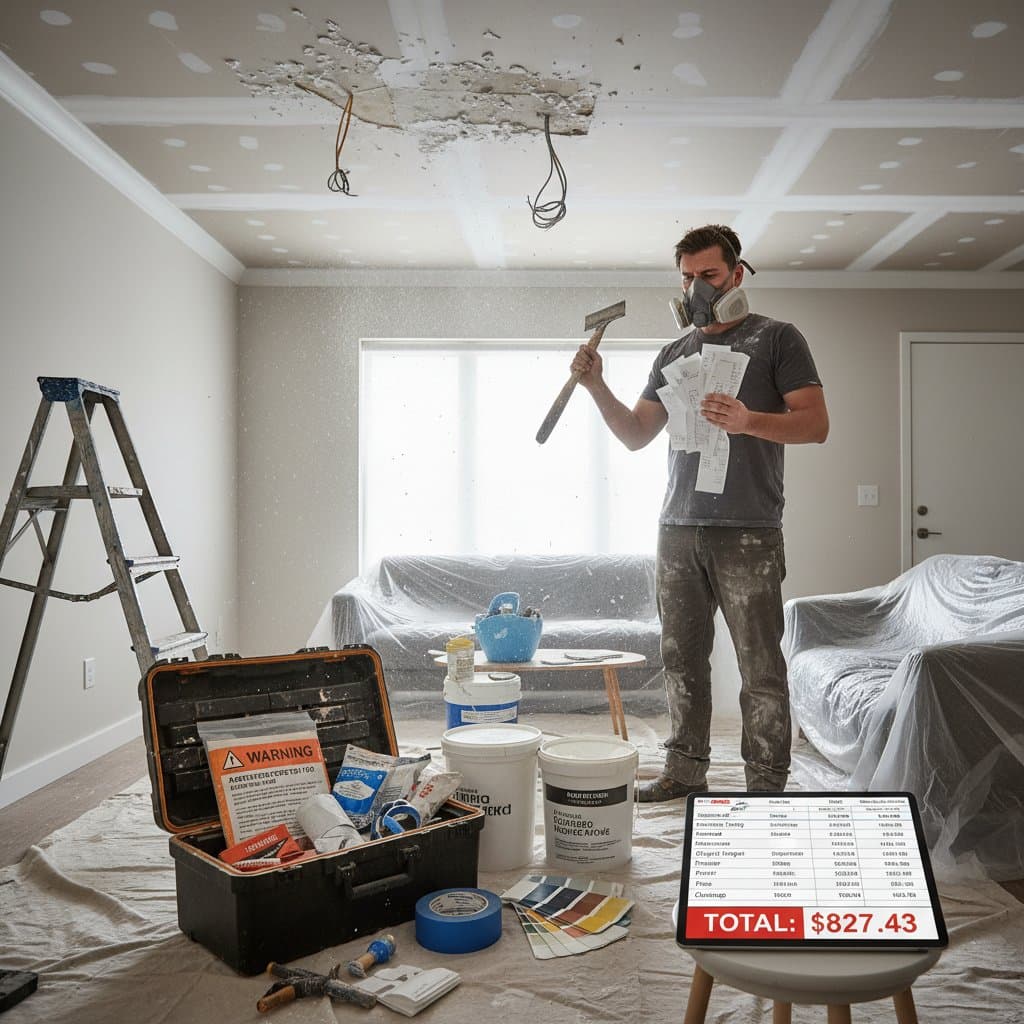Why Venetian Plaster DIY Wastes $500 on Most Homes
Venetian plaster has a reputation for elegance and timeless appeal. It creates a smooth, polished surface that reflects light in a way paint cannot replicate. Many homeowners are drawn to its luxurious look and attempt to create it themselves with DIY kits. The promise of saving money by skipping professional labor makes DIY tempting. Yet for most homes, DIY Venetian plaster ends up wasting at least $500 in materials, tools, and wasted effort. The technique requires a skilled hand, specific preparation, and specialized finishing methods that are very difficult to replicate without training.
This guide explains why DIY Venetian plaster often fails, what the real costs look like, and how professional application compares. By understanding the financial and practical realities, homeowners can make smarter decisions before spending money on plaster kits that rarely deliver the intended results.
Average Cost Ranges by Project Size
- Small accent wall (100 sq. ft.): $1,000 to $2,500 professionally, $400 to $800 with DIY kits but often with poor results
- Medium room (250 sq. ft.): $2,500 to $6,250 professionally, $1,000 to $2,000 DIY, plus extra costs for corrections
- Large room (500 sq. ft.): $5,000 to $12,500 professionally, $2,000 to $4,000 DIY with higher risk of inconsistencies
Factors Affecting Venetian Plaster Costs
Several variables determine the price and outcome of Venetian plaster projects. Understanding these helps explain why DIY so often leads to wasted money.
Surface preparation: Walls must be perfectly smooth and free of imperfections. Any bumps or cracks show through the plaster. Preparing walls can add several hundred dollars in time and materials.
Skill level: Venetian plaster requires a trowel technique that distributes layers evenly and creates a polished, marble-like sheen. Without training, streaks and uneven coloration are almost guaranteed.
Number of layers: True Venetian plaster involves multiple coats, often three to five, with each coat requiring drying time and careful application. Skipping layers or applying them incorrectly leads to dull or patchy results.
Materials used: Low-cost kits use synthetic plasters that lack the depth of authentic lime-based products. While cheaper upfront, they do not achieve the same luxurious look and may not last as long.
Sealing and finishing: Burnishing and waxing are critical to the final appearance. Improper sealing can leave surfaces dull or prone to stains.
Room size and access: Larger or more complex areas, such as high ceilings or rooms with many corners, increase the difficulty and cost.
Why DIY Venetian Plaster Fails
The most common reason homeowners waste money on Venetian plaster DIY is underestimating the level of precision required. A paint roller cannot apply Venetian plaster. The process involves layering with a steel trowel, smoothing edges, blending tones, and polishing to a reflective finish. Small mistakes compound quickly, leaving streaks or rough textures.
Hidden Costs in DIY
- Buying trowels, hawks, and burnishing tools: $100 to $200
- Purchasing waxes and sealants: $50 to $100
- Extra plaster due to trial and error: $150 to $300
- Sanding materials or patching supplies for corrections: $50 to $100
- Potential need to repaint or re-plaster: $300 to $600
Altogether, most DIY attempts that go poorly end up costing around $500 or more in wasted materials and corrections.
Money-Saving Strategies
Homeowners can reduce costs without sacrificing quality by approaching Venetian plaster strategically:
- Choose feature walls: Instead of covering entire rooms, select accent walls to highlight. This reduces square footage while still achieving dramatic effect.
- Prepare walls yourself: Handle cleaning, minor repairs, and priming before professionals arrive. This lowers labor time.
- Get multiple quotes: Comparing estimates ensures you pay fair market rates for skilled application.
- Time your project wisely: Hiring during slower seasons may reduce labor rates.
- Invest in quality over quantity: A smaller area of premium plaster often looks more impressive than large expanses of low-quality application.
Planning Your Budget
Budgeting for Venetian plaster requires balancing material choices, labor, and long-term value. Start by measuring the square footage of the intended space. Decide whether the project will cover a full room or a feature wall. Allocate funds for preparation, finishing, and a contingency buffer of at least 10 percent for unexpected costs.
For homeowners set on DIY, factor in tools and practice boards to learn techniques before applying to walls. Be realistic about the likelihood of needing professional correction if results are unsatisfactory. For most homeowners, working with a professional from the start delivers better results and more predictable costs.
Frequently Asked Questions
1. What's the average cost for Venetian plaster in a home?
Most homeowners spend between $10 and $25 per square foot for professional application. DIY kits cost $4 to $8 per square foot, but hidden tool and correction costs usually raise the total.
2. What factors have the biggest impact on Venetian plaster costs?
The most important factors are the size of the project, the type of plaster used, the amount of wall preparation required, and the number of layers applied. Skill level also impacts whether the finish looks professional or requires rework.
3. How can I save money on Venetian plaster without sacrificing quality?
Focus on smaller accent walls, handle basic wall prep yourself, and get several quotes from reputable contractors. Use authentic lime-based plaster for better durability, and invest in quality where it matters most rather than covering large areas with lower-grade products.
4. Should I hire professionals or attempt this as a DIY project?
Venetian plaster is one of the most challenging wall finishes to apply. Professionals bring training and tools that ensure flawless results. DIY can be attempted on small surfaces, but most homeowners struggle to achieve the polished look and end up spending more on corrections.
5. How do I budget for unexpected costs in Venetian plaster projects?
Include at least 10 percent of your project budget as a contingency. Unexpected costs often come from extra surface preparation, additional layers needed for coverage, or corrections to uneven application.
6. When is the best time to start a Venetian plaster project for the lowest costs?
Seasonal demand affects labor pricing. Scheduling during slower months for contractors can sometimes lower costs. Avoid peak renovation seasons when contractors are busiest and prices are higher.
By understanding the real costs and risks of DIY Venetian plaster, homeowners can avoid wasting $500 or more on materials and mistakes. Professional application ensures the timeless elegance of Venetian plaster is achieved without the frustration and expense of failed attempts.



